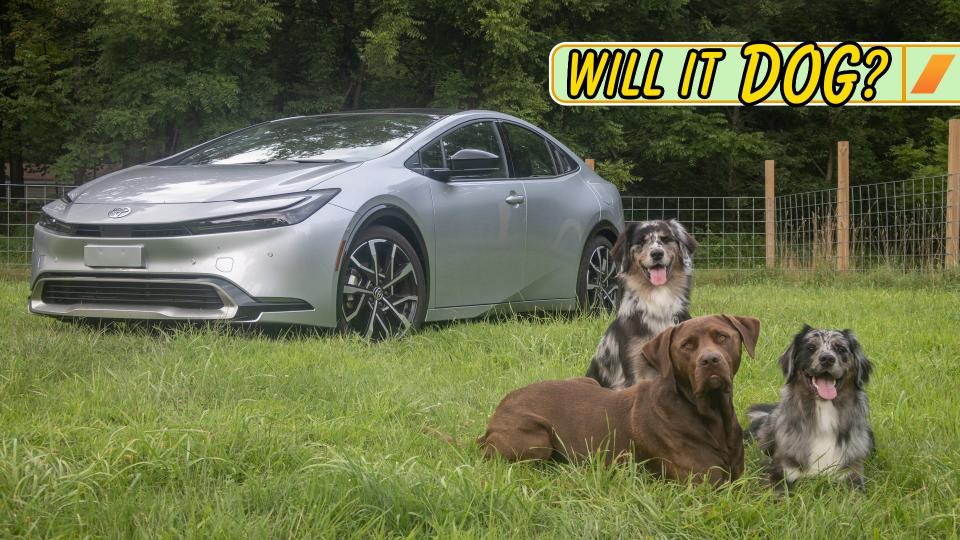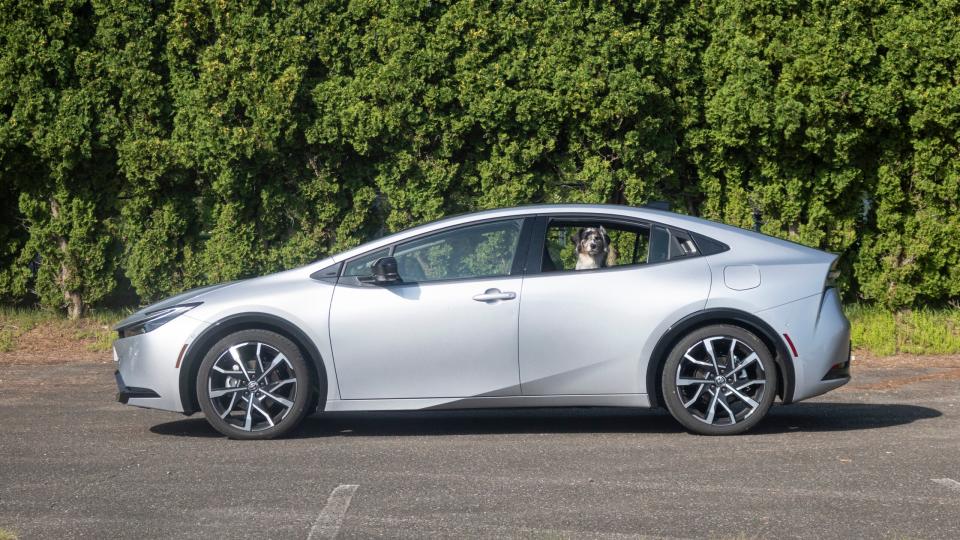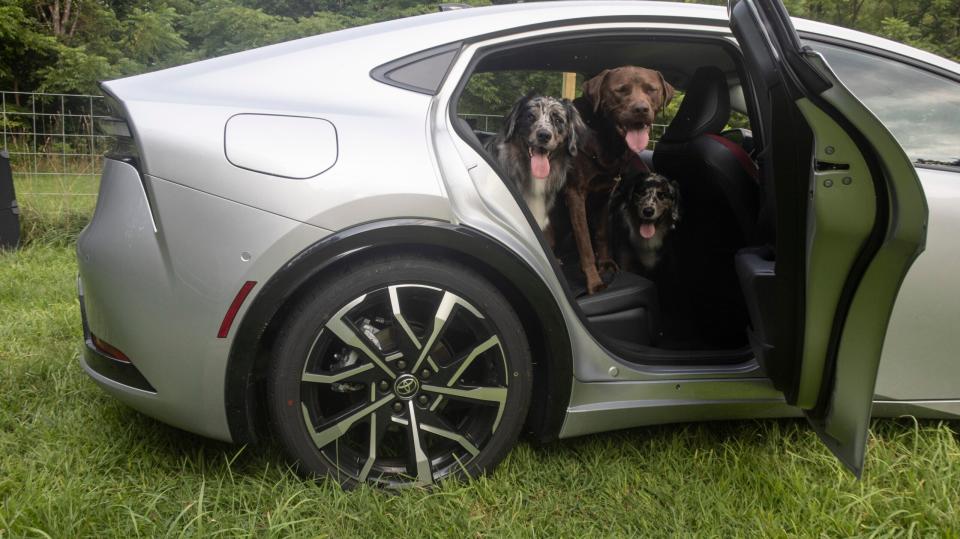2023 Toyota Prius Prime Review: Will It Dog?

I’ve been as enamored with the new 2023 Toyota Prius Prime’s looks as everyone else. Its glow-up from dorky little shuttlecraft to sleek space chariot was one of the best car body style evolutions we’ve seen in a minute. I don’t think our dogs cared about that too much, but they certainly enjoyed zooming around in near-silence.

Welcome to Will It Dog, The Drive's car review series for canine owners. Here we'll look at what a new Prius is like to live with if you have dogs and point out any specific aspects that help or hurt its case as a dog taxi. We'll focus on the car's physical attributes when it comes to carrying animals rather than driving dynamics but provide insights there too.

Our main test dogs Bramble and Indi are littermates; half Golden Retriever (dad) and half Australian Shepherd (mom). Bramble's the smallest at 40-odd pounds while her brother is about 60 pounds. Levi is a leviathan of a lab with a head like a wrecking ball and the temperament of a tree.
2023 Prius Prime Specs for Dog Owners | |
|---|---|



Interior Materials and Layout
The Prius is a mediumish-sized (by American standards—Euros might call it huge) hatchback. The interior layout is pretty standard with two seats up front separated by a busy center console, a bench rear seat, and a cargo bay area behind. Even though the Prius looks low, Toyota’s people did a nice job of making it feel airy in the cabin and getting a lot out of the trunk space. Folding down the back seats unlocks loads of flat space for a large-breed animal in or out of a kennel.


The plastics and soft surfaces all seemed so much nicer than the Prii I normally encounter—in Ubers or taxis with a quarter-million miles of hard use on them. But I also think this car’s interior stands on its own as nicely appointed. The arrangement of the shifter, climate controls, and infotainment screen is very traditional and user-friendly.


But a clean digital gauge cluster and nicely shaped dashboard keep the vehicle looking contemporary. The steering wheel has quite a few big buttons on it, it almost reminds me of an oversized TV remote for old people (anybody else buy those as a joke?). That’s the only place I think this new-gen Prius hung onto any Poindexter energy it might have had in previous iterations.
The seats are good, maybe not exceptional, but certainly acceptable. As far as your dog’s concerned, the main layout aspect that matters is how low the rear seats and footwell are, and how easy it is to get paws on the center console. Bramble the 45-pound Aussie Shep-Retriever was quick to try and stand between the front two seats. Of course, this is mitigated if your dog rides with a belt, but still.
Climbing In and Out
Ingress and egress to the back seat are exceptionally easy with this car. Even the smallest-breed healthy dogs should be able to hop up over that door sill. But if your furry friend needs a boost, you’ll be OK even if they’re on the porky side because you won’t have to get them very high.

The rear hatch is also a lot lower than it is on pretty much any SUV. Many dogs would be able to hop into the cargo bay from the ground, and again, if you had to lift one it wouldn’t be much of an issue. The top of the hatch is quite tall when it’s open and it closes with the touch of a button. Indi, another Aussie Shep-Retriever, was in the cargo area for our door-closing test. Despite the rrrr-sound the mechanism made and its steady downward speed, the dog wasn’t bothered by it and calmly let the hatch close around it. And don’t worry—of course, we measure the window-to-dog-head gap before shutting the door.




Reactive animals might have more trouble, but our test dogs didn’t mind the automated hatch-closing mechanism at all.

 Yahoo Autos
Yahoo Autos 